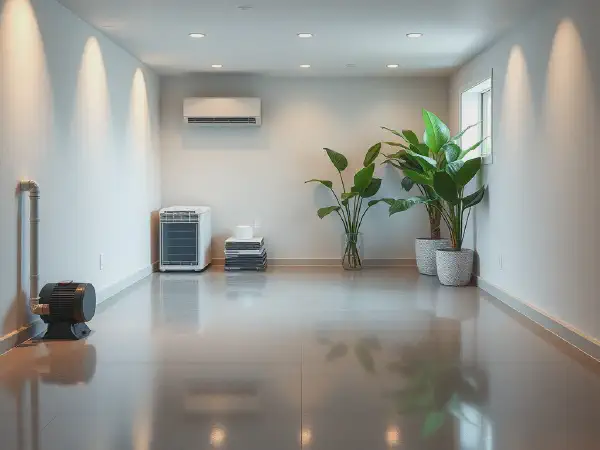The Essentials of Basement Waterproofing: Ensure Home Safety

The Comprehensive Guide to Basement Waterproofing
Basement waterproofing is crucial to maintaining a dry, safe, and functional living space in your home. Whether you use your basement for storage, a laundry room, or a finished living area, ensuring it is waterproofed protects your investment and enhances the usability of the space.
Basement waterproofing involves special techniques, materials, and methods to prevent water intrusion and damage from flooding or excess moisture. By effectively waterproofing your basement, you can significantly reduce the risk of structural damage and mold growth, making it an essential part of home maintenance.
The process of basement waterproofing can be approached from both exterior and interior perspectives, allowing homeowners flexibility in choosing a method that best fits their situational needs. Understanding these methods and the overall importance of basement waterproofing will empower homeowners to make informed decisions for their property.
One of the most significant reasons for basement waterproofing is to enhance the overall safety and value of your home. Water-damaged basements can lead to costly repairs and health hazards due to mold and mildew. Investing in proper waterproofing measures now can save substantial costs down the road.
In conclusion, basement waterproofing is not just a cosmetic improvement but a necessary action to protect your home. It is essential for any homeowner to comprehend the various waterproofing methods, potential DIY options, and the benefits of professional help to safeguard their basement.
Understanding Basement Waterproofing
Basement waterproofing is the process of applying techniques and materials to prevent water from permeating into the basement area of a building. It is crucial for both the longevity of the structure and the comfort of its occupants.
Common causes of basement flooding include heavy rainfall, melting snow, poor drainage systems, and structural issues like cracks or holes in the foundation. Understanding these causes helps homeowners take preemptive steps before flooding occurs.
The importance of basement waterproofing extends beyond just keeping the area dry. A well-waterproofed basement can prevent potential health risks associated with mold growth, preserve the structural integrity of the home, and increase the property's value on the market.
Basement Waterproofing Methods
Exterior waterproofing involves techniques like installing drainage systems, waterproof membranes, and grading the landscape around the foundation to divert water away from the home. This proactive approach is essential for new constructions or homes with significant flooding issues.
Interior waterproofing solutions may include the use of sump pumps, dehumidifiers, and the application of sealants to walls and floors. These methods focus on managing existing water intrusion rather than preventing it.
A comparative analysis shows that while exterior waterproofing is often more effective in preventing water intrusion, interior solutions are typically more affordable and easier to implement. Homeowners should consider their specific situation when choosing a method.
DIY Basement Waterproofing Tips
Materials needed for DIY waterproofing include waterproof sealants, sump pumps, drainage pipe systems, and dehumidifiers. Proper tools like brushes, trowels, and concrete mix are also essential for executing a successful waterproofing project.
The step-by-step waterproofing process generally involves assessing the area for moisture, cleaning surfaces, applying sealants to walls and floors, installing sump pumps, and adding drainage systems if necessary. Homeowners should follow local building codes throughout this process.
Common mistakes to avoid in DIY waterproofing include failing to properly clean surfaces before sealing, neglecting to address underlying drainage issues, and using low-quality materials that may not provide lasting protection.
Professional Basement Waterproofing Services
The benefits of hiring professionals include their expertise in identifying complex issues, access to high-quality materials, and guaranteed long-term solutions that DIY methods may lack. Professionals can also navigate local regulations effectively.
When hiring a waterproofing service, one can expect a comprehensive assessment of their home's needs, planned strategies for waterproofing, and a clear outline of the steps involved. Follow-up inspections and maintenance advice may also be included.
Cost factors for professional waterproofing services vary widely depending on the extent of the work required, the materials used, and the geographical location. Homeowners should obtain multiple quotes and consider the long-term value of professional versus DIY solutions.
Signs Your Basement Needs Waterproofing
Indicators of moisture issues in the basement include visible mold or mildew, musty odor, water stains on walls or floors, and increased humidity levels. Homeowners should address these signs promptly to prevent further damage.
Long-term problems from ignoring water issues can lead to structural damage, reduced air quality, and increased health risks for inhabitants. Such issues make timely waterproofing crucial for maintaining a healthy home environment.
When to call for waterproofing assistance includes noticing persistent moisture issues, significant rainfall leading to flooding, or any signs of structural damage. Professional evaluation can provide critical insights into necessary action.
Maintaining a Dry Basement
Regular maintenance tips for basement care include checking for cracks, ensuring proper drainage, and monitoring humidity levels. Homeowners should also conduct yearly inspections to identify potential problems before they escalate.
Seasonal checks for moisture control should happen before and after heavy rain seasons, ensuring that all drainage systems are working correctly and that no water is pooling near the foundation.
Long-term strategies to keep your basement dry involve a combination of good landscaping, installation of drainage systems, HVAC maintenance, and ensuring adequate ventilation. These preventative measures will help maintain a healthy home environment.
